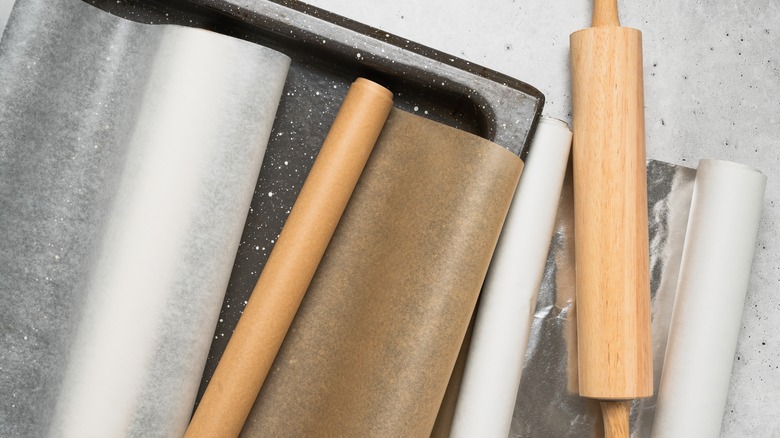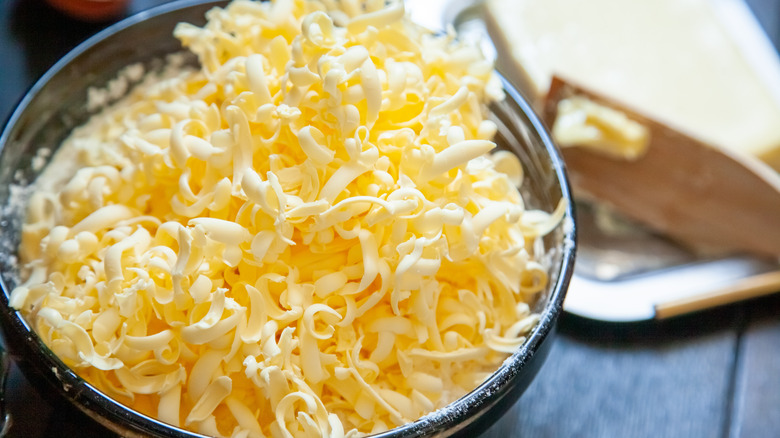Ina Garten's Genius Tip For Grating Butter Without Any Mess
Fans of Ina Garten's television shows often catch her muttering what has become her famous catchphrase, "How easy is that?" after sharing a handy tip or effortless cooking technique. It perfectly summarizes her approachable, yet often genius, approach to cooking. Garten's baking tip for how to easily handle recipes that call for small pieces of butter is no exception. In fact, she suggests simply grating the butter over a sheet of parchment paper. It's something most of us already have on hand, but it can make all the difference.
There are many reasons a home cook might use grated butter in a recipe. Whether using name brand or generic butter, this smaller, uniform texture can be key to perfectly flaky buttermilk biscuits or tender, yet crisp, pie crusts. Once grated, the butter will incorporate more quickly than if it were sliced into cubes and then cut into the dry ingredients with a pastry blender. In many recipes, this step is important because it helps avoid overworking the dough, which could result in dense and unpleasant results.
Parchment paper is the key
A sheet of parchment paper is key to Ina Garten's butter grating tip for several reasons. First and foremost, parchment paper facilitates easy cleanup. Once the butter has been transferred to the recipe, the paper can be discarded, leaving no greasy residue on your work station.
Additionally, the shiny side of parchment paper is a non-stick surface. This feature allows the butter to slide effortlessly into the rest of the ingredients without the need to use your fingers. It's astounding how quickly even the warmth of your skin can begin to melt butter, especially once it's been grated into fine, soft strands. In many recipes, the ratio of fat to other components is imperative, so any loss can affect how the recipe turns out — and you will inevitably have to brush off the last few bits of grated butter from the board with your hands, possibly melting it before it makes it into the bowl.
Other butter grating tips
Another useful tip is to pop your butter in the freezer before you begin preparing your recipe. This helps the stick maintain its shape long enough to grate before melting. To further aid in this goal, try peeling back the butter wrapper gradually as you go — it serves as both a grip and a barrier from the warmth of your hands during the process. Also, don't forget to use the largest holes on your box grater. Anything smaller will result in butter dust rather than those uniform-sized pieces you're after.
The best part is that once the frozen butter is grated, it softens faster, which is excellent for creaming into your bakes, ensuring even distribution. However, grated butter is also useful beyond fussy pastry recipes. The next time you crave a smooth spread of soft, melty butter on a warm slice of toast, or feel the urge to whip up a batch of easy homemade cookies but lack softened butter, simply grate your frozen stick. It will become soft and easy to work with in no time. It's a great time-saving trick for when an unexpected craving strikes.



